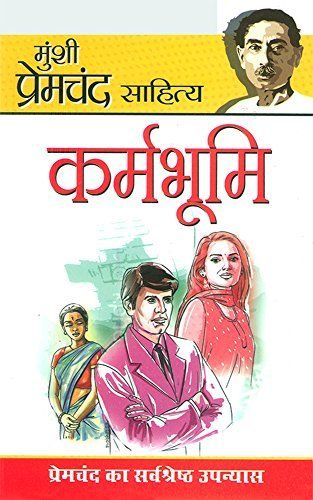"Karmabhoomi": A Tale of Social Realities and Shocking Revelations by Munshi Premchand

Munshi Premchand’s Karmabhoomi is a literary masterpiece that delves deeply into the social, political, and cultural complexities of pre-independence India. The novel is rich in drama, profound in its analysis of society, and packed with jaw-dropping moments that continue to resonate with readers today. Premchand uses the narrative to shed light on societal injustices, the oppressive structures of caste, gender, and class, and the human spirit’s resilience amidst these adversities.
Here, we explore some of the most striking instances from the novel and their significance:
1. The Traumatic Incident of Munni’s Assault
One of the most heart-wrenching moments in the novel is the assault on Munni, a Dalit woman. The incident not only exposes the brutality of a patriarchal and caste-driven society but also highlights the vulnerability of women, especially those from marginalized communities. Premchand presents this event unflinchingly, forcing readers to confront the dark truths of societal violence. Through Munni’s plight, he critiques the deep-seated inequalities that render women powerless in a system dominated by men.
2. The Tragedy at the Temple: Violence Against Dalits
Another shocking event unfolds when Dalits attempt to enter a temple, asserting their right to equality and worship. In response, they are met with hostility and even gunfire from upper-caste individuals. This chilling moment starkly portrays the cruelty of the caste system and the lengths to which the privileged classes go to maintain their dominance. Premchand uses this episode to emphasize the urgent need for social reform and the dismantling of caste-based hierarchies.
3. The Farmers' Struggle and Amarkant’s Transformation
The involvement of Amarkant and Sukhdha in the farmers’ movement against feudal landlords is a pivotal aspect of the novel. Amarkant’s transformation from a passive, privileged individual to an active participant in social reform is inspiring. Premchand paints a vivid picture of the hardships faced by farmers, including exploitation, poverty, and forced labor. These events not only underline the suffering of the agrarian class but also highlight the power of collective action and the potential for change through unity.
4. The Heartbreaking Death of Naina
The death of Naina, one of the central characters, is a moment of immense emotional weight. Naina’s demise symbolizes the fragility of life amidst social turmoil and the cost of fighting against a rigid, oppressive system. Premchand’s portrayal of her death is poignant, forcing readers to reflect on the sacrifices made by individuals in their quest for justice and equality.
5. Sukhdha’s Imprisonment and Bold Stance
Sukhdha’s decision to participate in the Dalit temple entry movement and her subsequent imprisonment is one of the most powerful moments in Karmabhoomi. Her courage and willingness to fight for justice despite societal pressures and personal risks set her apart as a revolutionary character. Premchand uses Sukhdha’s journey to challenge the traditional roles assigned to women and to advocate for their involvement in societal transformation.
Themes and Relevance of Karmabhoomi
Karmabhoomi is much more than a narrative of personal struggles; it is a mirror reflecting the societal issues of Premchand’s era, many of which persist to this day. The novel addresses the following themes:
- Caste Oppression: Premchand critiques the caste system and its dehumanizing impact on individuals and communities.
- Patriarchy and Gender Inequality: Through characters like Sukhdha and Munni, he exposes the struggles faced by women in a male-dominated society.
- The Plight of Farmers: The novel vividly captures the exploitation of farmers and the necessity of organized resistance.
- Social Reform: It advocates for collective action, empathy, and a commitment to justice as the means to bring about societal change.
Why You Should Read Karmabhoomi
- Timeless Relevance: The issues discussed in the novel, such as caste discrimination, gender inequality, and economic exploitation, remain relevant in modern society.
- Rich Characterization: Premchand’s characters are multi-dimensional and reflective of real-life struggles, making their journeys deeply relatable.
- Insight into Pre-Independence India: The novel offers a vivid depiction of the socio-political environment of its time, providing readers with historical and cultural insights.
- Inspirational Themes: Karmabhoomi encourages readers to challenge injustices and work towards a more equitable society.
- Masterful Storytelling: Premchand’s evocative prose, powerful imagery, and compelling narrative make this novel a literary treasure.
Karmabhoomi is not just a story; it is a call to action, urging readers to reflect on their societal roles and responsibilities. The novel’s jaw-dropping moments and profound themes make it a must-read for anyone interested in understanding India’s socio-cultural fabric and the timeless fight for justice and equality. Premchand’s masterpiece continues to inspire and educate, reminding us of the importance of empathy, courage, and collective action in building a better world.